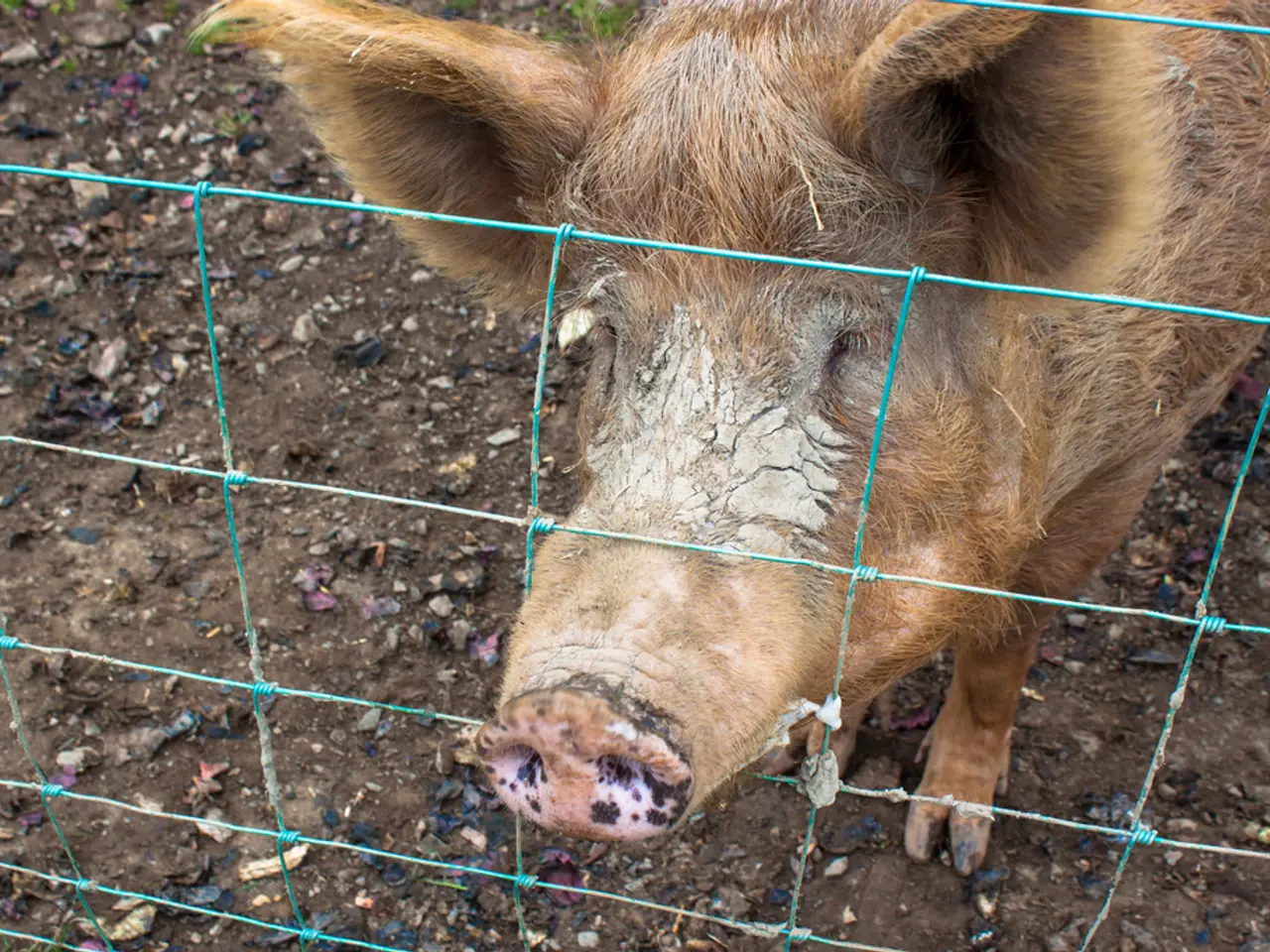Shift in Focus Towards Thursday's Trade Deals for Pigs
In the realm of agricultural markets, the lean hog sector is demonstrating a unique balance between supply and demand in 2025. This equilibrium is influenced by various factors, including recent USDA data and trade agreements such as the Japan-US deal.
Supply Outlook
USDA reports suggest a relatively stable sow herd over seven consecutive quarters, with a modest increase in pig crop and a slight rise in pigs under 50 pounds. This indicates that producers are maintaining production levels while improving productivity rather than expanding herd size aggressively. Weekly slaughter estimates are slightly above prior year levels, indicating steady supply [4].
Price and Futures Trends
Lean hog futures, like the CME October contracts, are around 12% higher than a year ago, reflecting expectations of continued robust demand. However, near-term futures prices have shown some weakness, with August lean hog futures trading lower recently [2][3][4]. The market is facing some short-term price pressure due to speculation and technical factors, but solid underlying demand offers potential price support.
Demand and Exports
USDA export reports indicate a recent decline in pork net sales, with key buyers including Mexico, Japan, and China. Exports remain significant but face volatility weekly [2]. The Japan-US trade deal likely supports continued demand stability or growth for U.S. pork in Japan, though explicit quantitative impacts from the deal in 2025 are not detailed in the recent reports.
Market Dynamics Context
Compared to the cattle market, which experiences more dramatic price moves due to supply shortages and trade barriers, the lean hog market exhibits a more balanced outlook with some seasonal and geopolitical headwinds but less extreme supply disruptions [1].
Current Market Scenario
As of July 21, the CME Lean Hog Index stood at $108.59, up 39 cents, while Oct 25 Hogs were at $90.900, up $0.400. However, Dec 25 Hogs were down $0.275, and August 25 Hogs were at $108.475, up $0.725 [3]. Lean hog futures showed mixed trends, with some nearbys higher and December down [4].
Important Considerations
It's crucial to keep an eye on future USDA releases, export sales updates, and geopolitical developments for clearer directional cues. The information and data in this article are solely for informational purposes.
Disclaimer
Austin Schroeder did not have positions in any of the securities mentioned in this article. It's always advisable to consult with a financial advisor before making investment decisions.
[1] USDA report on cattle market [2] USDA export report [3] CME Lean Hog Index [4] USDA hog slaughter report
In the broader context of finance and investing, one might consider the dynamics of the stock-market as a means to gauge the performance of the lean hog sector. For instance, if the CME October lean hog futures, which are currently 12% higher than a year ago, are indicative of a stock-market's performance, it could suggest continued robust demand in the lean hog market [2]. Additionally, monitoring investment opportunities in agriculture, such as those presented by the lean hog sector, can be influenced by factors like export volumes and trade agreements, similar to how international trade deals can impact the stocks of specific companies in other sectors [2].




